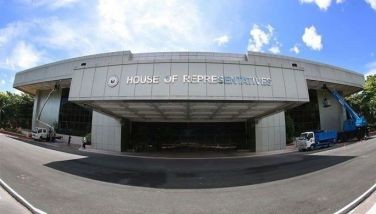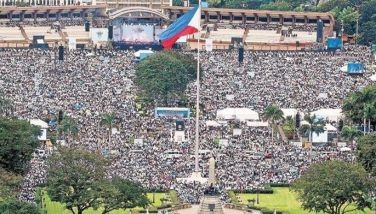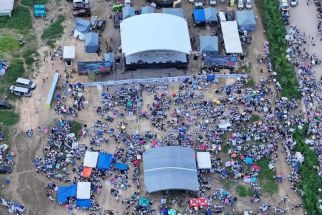EDITORIAL - Prepare for the worst
Even as Japan continues to reel from the consequences of the combined disasters of an earthquake, a tsunami and radioactivity from a damaged nuclear reactor, Myanmar was struck the other day by an earthquake. The death toll can only be estimated, with initial figures placed at 60, as information from the Myanmar government is rarely reliable. Though not as powerful as the record Magnitude 9 that hit Japan, a Magnitude 7 quake is strong enough to topple buildings, destroy bridges and cause liquefaction — the phenomenon that caused buildings, houses and gas stations across Luzon to sink into the ground during the earthquake in July 1990.
Over 1,600 people died in that Magnitude 7.8 quake that also shook Metro Manila. These days, as Japan continues to suffer from powerful aftershocks and earthquakes are felt in several other Asian countries, volcanologists are warning that Metro Manila and surrounding areas are ripe for the big one. And liquefaction, the volcanologists warned, could occur in communities around Manila Bay and Laguna de Bay.
Earthquakes cannot be accurately predicted, but the odds that they will occur increase when the country’s neighbors are hit. Philippine volcanologists have issued sufficient warnings and the government must intensify risk reduction and disaster management programs.
Earthquake drills are conducted regularly in most schools. What needs more work amid the earthquake warnings is the reinforcement of school buildings, and all other buildings for that matter. Last year, the Department of Public Works and Highways identified 778 school buildings nationwide with weak structures, of which 107 were in Metro Manila. The structural integrity of all other buildings, especially Metro Manila’s high-rises, must also be inspected.
Volcanologists have identified the areas that are most prone to liquefaction. The areas are densely populated and residents are unlikely to move out, but they can have their homes and offices checked for structural defects. The government must prepare for fires and the disruption of power and water supplies as well as communication and mass transportation facilities. Local governments must organize barangay-level responses to a powerful earthquake. The country has experienced many natural catastrophes and the disaster in Japan is a reminder to be constantly prepared for the worst.
- Latest
- Trending





























